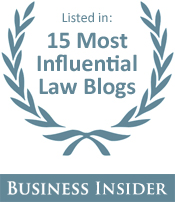Whistleblower Law Blog
The Employment Law Group® Prevails in Establishing the Broad Scope of Sarbanes-Oxley Protected Conduct
In Feldman v. Law Enforcement Associates Corp., Judge W. Earl Britt of the U.S. District Court for the Eastern District of North Carolina ruled that plaintiffs Paul Feldman and Martin Perry successfully stated a Sarbanes-Oxley whistleblower claim and could proceed to trial; defendants Law Enforcement Associates Corp. (LEA), John Carrington, et al., had failed to quash all of plaintiffs’ claims with their motion to dismiss. The court held that the Sarbanes-Oxley Act (SOX) does not require that the fraudulent conduct or violation of federal securities law be committed directly by the employer that takes the retaliatory action.
LEA is a manufacturer of security and surveillance equipment used by local, state, federal and international law enforcement agencies and by public and private companies. John Carrington is LEA’s founder and former majority shareholder. Feldman was LEA’s President for almost twenty years, and Perry was LEA’s Director of Sales – both were also directors of the corporation. Feldman and Perry discovered at LEA what they believed to be business transactions that violated U.S. export controls:
In 2005, Carrington was convicted of felonies relating to the illegal export of evidence collection products to China. The federal government fined Carrington, placed him on probation for one year, and prohibited him from making exports for five years. . . . Carrington resigned from LEA’s Board and also ended his management and majority ownership role at LEA. After Carrington’s departure, LEA entered into multiple contracts with a company called SAFE Source to export receivers and video equipment to police in the Dominican Republic. In September 2007, Feldman and Perry discovered that Carrington had an ownership interest in SAFE Source.
Because Carrington had been banned from making exports for five years and because he had an ownership interest in SAFE Source, plaintiffs maintain that it was illegal for SAFE Source to engage in the export business. Feldman and Perry notified LEA’s Board and then federal authorities:
In January 2008, LEA’s counsel, James Jorgensen (“Jorgensen”), and plaintiffs met with federal authorities at the [Department of Commerce] (DOC) to report Carrington’s illegal and undisclosed ownership of SAFE Source and the illegal export business that SAFE Source conducted with LEA. Approximately one week after plaintiffs reported these activities to the DOC, federal agents raided the headquarters of SAFE Source . . . and began a criminal investigation.
LEA then fired both plaintiffs. On September, 30 2009, plaintiffs sent an email and a letter to the SEC to report their concerns about the false 8k filing regarding their firings. Feldman sent a letter to the United States Department of Labor, Occupational Health and Safety Administration (OSHA) regarding LEA’s failure to report information to the SEC, including plaintiffs’ cooperation with investigations by the DOC into export violations by Carrington. Feldman and Perry also filed complaints with OSHA alleging LEA had violated federal whistleblower protections. On December 3, 2009, LEA removed plaintiffs from the Board of Directors.
Whistleblower claims under the Sarbanes-Oxley Act of 2002.
In order to make a prima facie showing of a SOX violation, an employee’s complaint must allege that:
- the employee engaged in activity protected by SOX;
- the employer knew, actually or constructively, of the protected activity;
- the employee suffered an unfavorable personnel action; and
- the circumstances raise an inference that the protected activity was a contributing factor in the personnel action.
For purpose of the motion to dismiss the court only addressed the first element: whether the plaintiffs have sufficiently pled that they engaged in protected activity under SOX. They must show that they complained to a “Federal regulatory or law enforcement agency . . . or a person with supervisory authority” over them, and their complaint “definitively and specifically” related to:
- mail fraud,
- wire fraud,
- bank fraud,
- securities fraud,
- any rule or regulation of the SEC or
- any provision of federal law related to fraud against shareholders.
In addition, plaintiffs must show that they had both “a subjective belief and an objectively reasonable belief” that the conduct they complained constituted a violation of federal law.
Adopting a broad scope of SOX protected conduct, the court held that SOX does not require that the fraudulent conduct or violation of federal securities law be committed by the employer that takes the retaliatory action. Plaintiffs maintain they reasonably believed that LEA’s involvement with SAFE Source caused LEA to engage in illegal exports and jeopardized LEA’s numerous contacts with federal customers that required compliance with export laws and regulations. Therefore, reporting a third party’s fraudulent behavior to an employer constitutes protected conduct under the whistleblower provisions of SOX.



